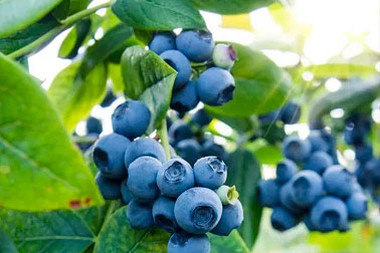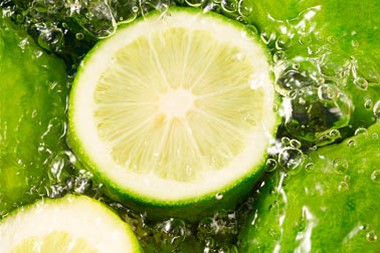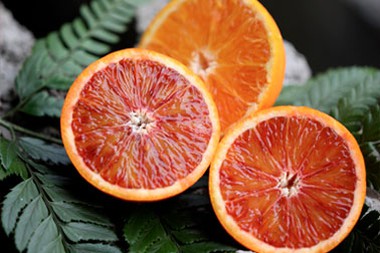The Comprehensive Insight into Peanut Shell Extract
Introduction
it, derived from the outer covering of peanuts (Arachis hypogaea), is a natural and versatile ingredient widely used in various industries. Rich in bioactive compounds, this extract has garnered significant attention for its potential health benefits and applications in different sectors. This article aims to explore its constituents and applications while adhering to Google's guidelines for content inclusion and ranking. Without referencing tumors or cancer-related terms, we will delve into the intriguing world of it and its diverse uses.
1. The Nutritional Profile of it
it boasts a diverse nutritional profile, which contributes to its wide-ranging applications. It is primarily composed of carbohydrates, proteins, dietary fiber, and fats. The carbohydrates present in the extract predominantly include cellulose and hemicellulose, imparting it with a significant dietary fiber content.
2. Polyphenols Antioxidant Powerhouses
One of the key components found in it is polyphenols. These naturally occurring compounds are renowned for their potent antioxidant properties. Polyphenols, such as flavonoids and phenolic acids, play a crucial role in neutralizing free radicals and protecting cells from oxidative stress, thereby promoting overall health.
3. Flavonoids A Multifaceted Approach
it contains various types of flavonoids, including flavones, flavanones, flavonols, and isoflavones. These compounds are known for their diverse biological activities, including anti-inflammatory, antimicrobial, and neuroprotective effects. Additionally, flavonoids contribute to improved cardiovascular health and immune system support.
4. Phenolic Acids Balancing Health Benefits
Phenolic acids, like ferulic acid and coumaric acid, are present in significant amounts in it. These compounds have been linked to potential benefits, such as reducing the risk of chronic diseases, supporting digestive health, and enhancing nutrient absorption.
5. Tocopherols Vitamin E Guardians
it is a rich source of tocopherols, particularly gamma-tocopherol, a type of vitamin E. Vitamin E is a fat-soluble antioxidant that protects cell membranes from damage caused by free radicals. Including it in the diet may contribute to maintaining healthy skin, eyes, and immune function.
6. Phytosterols Cholesterol Managers
Phytosterols are plant-derived compounds found in Peanut Shell Extract. They have a similar structure to cholesterol and can compete for its absorption in the digestive tract. By doing so, phytosterols can help lower LDL cholesterol levels, reducing the risk of cardiovascular diseases.
7. Applications in the Food Industry
it finds numerous applications in the food industry. As a natural antioxidant, it can be used as a food preservative, extending the shelf life of various products. Moreover, the extract's dietary fiber content makes it an ideal ingredient for developing functional foods aimed at promoting digestive health.
8. Cosmetic and Personal Care Products
The antioxidant and anti-inflammatory properties of it make it a valuable addition to cosmetic and personal care products. It can be incorporated into skincare formulations to combat oxidative stress and promote a healthy complexion. Additionally, its potential to soothe irritation and redness enhances its appeal in various skincare products.
9. Pharmaceutical and Nutraceutical Applications
Given its rich polyphenolic content, it holds promise in the pharmaceutical and nutraceutical sectors. Ongoing research suggests that the extract's bioactive compounds may have potential therapeutic applications in managing inflammation-related disorders and supporting immune function.
10. Agricultural and Environmental Applications
Beyond its human-centric applications, it can be utilized in agriculture and environmental settings. The extract's bioactive compounds have shown potential as natural insecticides and fungicides, providing an eco-friendly alternative to conventional chemical pesticides.
Conclusion
it, a treasure trove of bioactive compounds, has emerged as a multifunctional ingredient with wide-ranging applications. From the food industry to cosmetics, pharmaceuticals, and agriculture, its diverse properties have piqued the interest of researchers and professionals alike. As further studies unfold, the full potential of it and its promising applications in various industries is expected to be unlocked, presenting a promising future for this natural extract.
Title Nutritional Composition of Peanut Skins
Introduction
Peanuts are popular legumes known for their delicious taste and numerous health benefits. While most people consume the inner part of the peanut, the skins that cover them often go unnoticed and discarded. However, peanut skins contain a plethora of essential nutrients that can contribute to overall health and well-being. In this article, we will explore the nutritional composition of peanut skins, shedding light on their potential benefits and how they can be utilized to maximize their nutritional value.
1. Fiber
Peanut skins are rich in dietary fiber, a crucial component of a healthy diet. Fiber plays a significant role in promoting digestive health by aiding in bowel movements and preventing constipation. Additionally, it can help regulate blood sugar levels, reduce cholesterol, and contribute to a feeling of fullness, making it beneficial for weight management.
2. Antioxidants
Peanut skins are a potent source of antioxidants, such as polyphenols and flavonoids. Antioxidants play a vital role in neutralizing harmful free radicals in the body, thereby reducing oxidative stress and the risk of chronic diseases. These compounds also exhibit anti-inflammatory properties, promoting cardiovascular health and reducing the risk of certain diseases.
3. Resveratrol
Resveratrol, a type of polyphenol found in peanut skins, is renowned for its potential health benefits. It has been linked to improved heart health by promoting blood vessel dilation and reducing the risk of blood clot formation. Additionally, resveratrol is believed to have anti-aging properties and may support cognitive function.
4. Vitamin E
Peanut skins are a rich source of vitamin E, a fat-soluble antioxidant that helps protect cells from oxidative damage. This vitamin is essential for maintaining healthy skin, eyes, and a robust immune system. Incorporating peanut skins into the diet can boost vitamin E intake and contribute to overall well-being.
5. B Vitamins
Peanut skins contain various B vitamins, including niacin, folate, and thiamine. These vitamins are involved in energy production, nerve function, and cell metabolism. Niacin, for example, plays a vital role in maintaining healthy skin and proper nerve function.
6. Minerals
Peanut skins also contain essential minerals like potassium, magnesium, phosphorus, and zinc. Potassium is essential for maintaining healthy blood pressure and heart function. Magnesium is crucial for bone health and muscle function. Phosphorus is essential for energy metabolism and bone mineralization. Zinc is involved in immune function and wound healing.
7. Prebiotics
Peanut skins contain prebiotic fibers that support the growth and activity of beneficial gut bacteria. These prebiotics promote a healthy gut microbiome, which is crucial for overall digestive health and immune function.
8. Protein
While the protein content in peanut skins is not as significant as that in the inner peanut, it still provides a supplementary protein source. Protein is essential for tissue repair, enzyme production, and supporting the immune system.
Utilization and Incorporation into the Diet
There are various ways to utilize peanut skins to harness their nutritional benefits
1. Peanut Skin Tea Peanut skin tea can be prepared by steeping dried peanut skins in hot water. This tea can be a delicious and nutritious beverage, especially when combined with other herbal teas.
2. Peanut Skin Powder Dried and ground peanut skins can be transformed into a powder that can be added to smoothies, oatmeal, or baked goods, enhancing the nutritional profile of these foods.
3. Snack Additive Roasted and ground peanut skins can be sprinkled over snacks like salads or yogurt for an extra boost of nutrients and a delightful nutty flavor.
4. Animal Feed Peanut skins can be incorporated into animal feed formulations, providing animals with essential nutrients that may be beneficial for their health.
Conclusion
Peanut skins are a highly nutritious part of the peanut that is often overlooked. By incorporating peanut skins into our diet, we can access a rich source of fiber, antioxidants, vitamins, and minerals. These nutrients can contribute to improved digestive health, strengthened immune function, and overall well-being. Whether consumed as a tea, powder, or a snack additive, peanut skins can be a valuable addition to a balanced and healthy diet.
What Constitutes the Healthiest Part of a Peanut?
Introduction
Peanuts, scientifically known as Arachis hypogaea, are one of the most popular legumes consumed worldwide. They are not only tasty but also boast an array of nutritional benefits. While many people consume peanuts in various forms, they might not be aware of the healthiest part of this versatile legume. In this article, we will explore the different components of peanuts and identify the healthiest part based on its nutritional profile and potential health benefits. Understanding the healthiest part of a peanut can help individuals make informed dietary choices and enjoy the full extent of its advantages.
The Peanut Anatomy
Before we delve into the healthiest part of a peanut, let's take a closer look at its anatomy. A peanut consists of several components, each contributing to its unique nutritional composition
1. Shell The outermost layer of a peanut is the shell, also known as the pod or husk. The shell serves as a protective covering for the nut inside.
2. Seed Coat Beneath the shell lies the seed coat, which is the thin brownish layer that covers the peanut kernel.
3. Kernel The kernel, also referred to as the cotyledon or nut, is the edible part of the peanut that most people consume. It is rich in essential nutrients and healthy fats.
4. Germ The germ is a tiny part of the kernel responsible for sprouting into a new plant if conditions are favorable.
5. Peg The peg is the structure that develops from the flower and burrows underground to produce peanuts.
Health Benefits of Peanuts
Peanuts are packed with various nutrients that contribute to their health benefits. However, it is important to note that individuals with allergies to peanuts should avoid consuming them, as they can cause severe reactions. For those without allergies, incorporating peanuts into their diet in moderation can offer the following advantages
1. Rich Source of Protein Peanuts are an excellent plant-based protein source, making them an ideal option for vegetarians and vegans to meet their protein needs.
2. Heart Health The healthy monounsaturated and polyunsaturated fats in peanuts can support heart health by reducing LDL cholesterol levels, thereby lowering the risk of cardiovascular diseases.
3. Weight Management Despite being energy-dense, peanuts can aid in weight management due to their high protein and fiber content, promoting satiety and reducing overall calorie intake.
4. Nutrient Profile Peanuts are a good source of essential nutrients like vitamin E, niacin, folate, magnesium, and phosphorus, contributing to overall well-being.
5. Antioxidant Properties Peanuts contain various antioxidants, such as resveratrol and flavonoids, which help combat oxidative stress and reduce inflammation in the body.
Identifying the Healthiest Part
After considering the anatomy and health benefits of peanuts, it is time to determine the healthiest part of this legume. While the entire peanut offers valuable nutrients, including the shell, the most nutritious part is the peanut kernel.
1. Nutritional Profile The peanut kernel is densely packed with nutrients, making it a nutrient-rich food. It contains an ideal balance of protein, healthy fats, dietary fiber, vitamins, and minerals. One ounce (28 grams) of dry-roasted peanuts provides approximately 7 grams of protein, 14 grams of fat (of which most are heart-healthy monounsaturated and polyunsaturated fats), 2 grams of dietary fiber, and various vitamins and minerals.
2. Healthy Fats The monounsaturated fats, particularly oleic acid, present in the peanut kernel have been associated with a reduced risk of heart disease and improved blood lipid profiles.
3. Micronutrients The peanut kernel is a notable source of essential micronutrients like vitamin E, niacin (vitamin B3), folate (vitamin B9), magnesium, and phosphorus. These nutrients play crucial roles in various bodily functions, including metabolism, nerve function, and bone health.
4. Dietary Fiber The kernel contains dietary fiber that aids in digestion and promotes gut health. It also helps regulate blood sugar levels, reducing the risk of type 2 diabetes.
5. Antioxidants The kernel contains powerful antioxidants, such as resveratrol, which can protect cells from oxidative damage and reduce inflammation.
Conclusion
In conclusion, while the entire peanut plant has its uses, the healthiest part is undoubtedly the peanut kernel. Packed with essential nutrients, healthy fats, and antioxidants, the kernel offers numerous health benefits, ranging from supporting heart health to aiding in weight management. As with any food, moderation is key, and incorporating a balanced diet that includes the healthiest part of a peanut can contribute to overall well-being and a healthier lifestyle.
please contact us at email: selina@ciybio.com.cn



